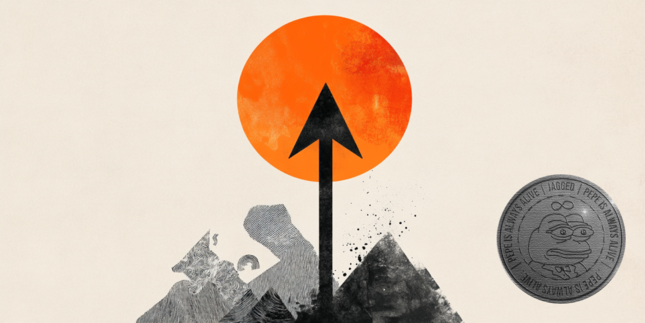- The New Zealand Dollar advanced as the RBNZ reduced its Official Cash Rate by 50 basis points in November.
- RBNZ Governor Orr noted that the forecasts align with a potential 50 basis point cut in February 2025.
- The USD struggles due to bond market optimism following President-elect Donald Trump's decision to nominate fund manager Scott Bessent.
The New Zealand Dollar (NZD) breaks its five-day losing streak against the US Dollar (USD) following the Reserve Bank of New Zealand's (RBNZ) interest rate decision on Wednesday. The central bank announced a further cut to its Official Cash Rate (OCR), lowering it by 50 basis points (bps) from 4.75% to 4.25% in November. Furthermore, investors await the US Personal Consumption Expenditure (PCE) Price Index and quarterly Gross Domestic Product Annualized scheduled to be released later in the North American session.
The RBNZ justified this rate cut by citing a bleak economic outlook and a decline in inflation, which has now returned to the central bank's target range of 1% to 3%. Earlier this year, the central bank reduced the OCR by 25 bps in August and followed with a 50 bps reduction in October.
RBNZ Governor Adrian Orr delivered prepared remarks on the policy statement during the post-meeting press conference. Orr clarified the misconception that the bank's projections indicate a slower pace of rate cuts, noting that the forecasts align with a potential 50 basis point cut in February 2025, contingent on economic activity. He also expressed confidence that domestic inflation pressures will continue to ease.
The NZD faced challenges due to weaker market sentiment, largely driven by President-elect Donald Trump's announcement of a 10% tariff increase on all Chinese goods entering the United States (US), as well as a 25% tariff on imports from Mexico and Canada. Since China is a significant trade partner for New Zealand, any economic disruption in China has a direct impact on New Zealand's economy.
New Zealand Dollar appreciates as US Dollar faces challenges due to bond market optimism
- The USD faced pressure amid bond market optimism following President-elect Donald Trump's decision to nominate fund manager Scott Bessent, a seasoned Wall Street veteran and fiscal conservative, as US Treasury Secretary.
- However, downside risks for the USD remain limited. Preliminary S&P Global US Purchasing Managers’ Index (PMI) data have bolstered expectations that the Federal Reserve might slow the pace of rate cuts. According to the CME FedWatch Tool, the probability of a quarter-point rate cut has dropped to 57.7%.
- The latest Federal Open Market Committee's (FOMC) Meeting Minutes for the policy meeting held on November 7, indicated that policymakers are adopting a cautious stance on cutting interest rates, citing easing inflation and a robust labor market.
- US President-elect Donald Trump is expected to appoint Jamieson Greer as the US Trade Representative, Bloomberg reported on Tuesday. Greer’s nomination highlights the central role of tariffs in Trump’s economic strategy.
- On Tuesday, Chicago Fed President Austan Goolsbee indicated that the Fed is likely to continue lowering interest rates toward a neutral stance that neither stimulates nor restricts economic activity. Meanwhile, Minneapolis Fed President Neel Kashkari highlighted that it remains appropriate to consider another rate cut at the Fed’s December meeting, according to Bloomberg.
- In November, S&P Global US Composite PMI climbed to 55.3, indicating the strongest growth in private sector activity since April 2022. Meanwhile, the US Services PMI rose to 57.0, up from 55.0, significantly surpassing market expectations of 55.2, marking the sharpest expansion in the services sector since March 2022.
- New Zealand’s Gross Domestic Product (GDP) shrank by 0.2% in the second quarter (Q2), following a revised 0.1% growth in the previous quarter. Economists had anticipated a 0.4% contraction for the period, while the RBNZ forecasted a 0.5% decline.
- Stats NZ showed on October 16 that New Zealand’s annual Consumer Price Index (CPI) rose 2.2% in Q3, aligning with market forecasts and marking a sharp slowdown from the 3.3% growth in Q2.
New Zealand Dollar tests the descending channel’s upper boundary near 0.5900
The NZD/USD pair trades near 0.5880 on Wednesday. A daily chart review highlights a deepening bearish trend as the pair moves within a descending channel pattern. Meanwhile, the 14-day Relative Strength Index (RSI) stays below 50, signaling persistent negative sentiment.
For support levels, the NZD/USD pair may navigate the region around the psychological level of 0.5800, which coincides with the lower boundary of the descending channel. A decisive break below this level would drive the pair toward its two-year low of 0.5772, last seen in November 2023.
On the upside, immediate resistance lies at the 14-day Exponential Moving Average (EMA) of 0.5886, which aligns with the upper boundary of the descending channel. A further barrier appears at the psychological level of 0.5900.
NZD/USD: Daily Chart
New Zealand Dollar PRICE Today
The table below shows the percentage change of New Zealand Dollar (NZD) against listed major currencies today. New Zealand Dollar was the strongest against the Canadian Dollar.
| USD | EUR | GBP | JPY | CAD | AUD | NZD | CHF | |
|---|---|---|---|---|---|---|---|---|
| USD | 0.02% | -0.09% | -0.44% | 0.05% | -0.21% | -0.64% | -0.13% | |
| EUR | -0.02% | -0.11% | -0.46% | 0.03% | -0.22% | -0.65% | -0.16% | |
| GBP | 0.09% | 0.11% | -0.34% | 0.14% | -0.11% | -0.54% | -0.05% | |
| JPY | 0.44% | 0.46% | 0.34% | 0.50% | 0.24% | -0.19% | 0.30% | |
| CAD | -0.05% | -0.03% | -0.14% | -0.50% | -0.25% | -0.69% | -0.19% | |
| AUD | 0.21% | 0.22% | 0.11% | -0.24% | 0.25% | -0.43% | 0.05% | |
| NZD | 0.64% | 0.65% | 0.54% | 0.19% | 0.69% | 0.43% | 0.49% | |
| CHF | 0.13% | 0.16% | 0.05% | -0.30% | 0.19% | -0.05% | -0.49% |
The heat map shows percentage changes of major currencies against each other. The base currency is picked from the left column, while the quote currency is picked from the top row. For example, if you pick the New Zealand Dollar from the left column and move along the horizontal line to the US Dollar, the percentage change displayed in the box will represent NZD (base)/USD (quote).
Economic Indicator
Personal Consumption Expenditures - Price Index (YoY)
The Personal Consumption Expenditures (PCE), released by the US Bureau of Economic Analysis on a monthly basis, measures the changes in the prices of goods and services purchased by consumers in the United States (US). The YoY reading compares prices in the reference month to a year earlier. Price changes may cause consumers to switch from buying one good to another and the PCE Deflator can account for such substitutions. This makes it the preferred measure of inflation for the Federal Reserve. Generally, a high reading is bullish for the US Dollar (USD), while a low reading is bearish.
Read more.Next release: Wed Nov 27, 2024 13:30
Frequency: Monthly
Consensus: 2.3%
Previous: 2.1%
Source: US Bureau of Economic Analysis
Information on these pages contains forward-looking statements that involve risks and uncertainties. Markets and instruments profiled on this page are for informational purposes only and should not in any way come across as a recommendation to buy or sell in these assets. You should do your own thorough research before making any investment decisions. FXStreet does not in any way guarantee that this information is free from mistakes, errors, or material misstatements. It also does not guarantee that this information is of a timely nature. Investing in Open Markets involves a great deal of risk, including the loss of all or a portion of your investment, as well as emotional distress. All risks, losses and costs associated with investing, including total loss of principal, are your responsibility. The views and opinions expressed in this article are those of the authors and do not necessarily reflect the official policy or position of FXStreet nor its advertisers. The author will not be held responsible for information that is found at the end of links posted on this page.
If not otherwise explicitly mentioned in the body of the article, at the time of writing, the author has no position in any stock mentioned in this article and no business relationship with any company mentioned. The author has not received compensation for writing this article, other than from FXStreet.
FXStreet and the author do not provide personalized recommendations. The author makes no representations as to the accuracy, completeness, or suitability of this information. FXStreet and the author will not be liable for any errors, omissions or any losses, injuries or damages arising from this information and its display or use. Errors and omissions excepted.
The author and FXStreet are not registered investment advisors and nothing in this article is intended to be investment advice.
Recommended content
Editors’ Picks

EUR/USD attacks 1.0800 ahead of EU inflation data
EUR/USD is battling 1.0800 in the early European session on Tuesday, undermined by the latest US Dollar bounce. Traders keenly await the EU inflation data and the US jobs survey for further impetus as US President Trump's 'reciprocal tariffs' announcement looms on Wednesday.

GBP/USD treads water above 1.2900 ahead of US data, tariffs
GBP/USD is trading on the defensive while holding above 1.2900 in Tuesday's European trading. The pair loses ground amid a modest US Dollar uptick as traders resort to repositioning in the lead-up to the top-tier US economic data releases and Wednesday's tariffs announcements.

Gold price eases from record high; bullish bias remains amid worries over Trump's tariffs
Gold price retreats slightly after touching a fresh all-time high on Tuesday as bulls pause for a breather and opt to wait for US President Donald Trump's reciprocal tariffs announcement. Adding to this, a positive tone around the Asian equity markets also acts as a headwind for the commodity amid overbought conditions on the daily chart.

PEPE could rally to double digits if it breaks above its key resistance level
Pepe memecoin approaches its descending trendline, trading around $0.000007 on Tuesday; a breakout indicates a bullish move ahead. Moreover, PEPE's long-to-short ratio supports a bullish thesis as bullish bets among the traders reach the highest over a month.

Is the US economy headed for a recession?
Leading economists say a recession is more likely than originally expected. With new tariffs set to be launched on April 2, investors and economists are growing more concerned about an economic slowdown or recession.

The Best brokers to trade EUR/USD
SPONSORED Discover the top brokers for trading EUR/USD in 2025. Our list features brokers with competitive spreads, fast execution, and powerful platforms. Whether you're a beginner or an expert, find the right partner to navigate the dynamic Forex market.


